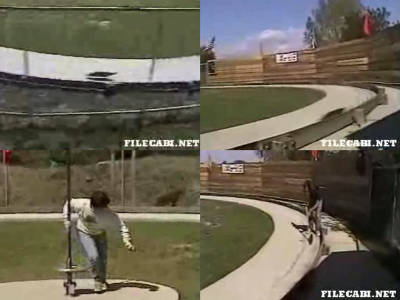Bicycle tires do not change speed whether they are narrow or wide
----

Bicycle tires come in a variety of widths. For example, the tire width of a racing bicycle is much narrower than that of a school bicycle. In general, many people think that the narrower the tires, the faster the speed, but Jan Heine of Rene Herse, a bicycle manufacturer founded in 1938, said, 'Even if the tires are narrow. Even if it is wide, the speed does not change. '
Myths in Cycling (1): Wider Tires Are Slower – Rene Herse Cycles
Heine first prepared tires of the same model with different widths of 20 mm, 23 mm and 25 mm, and measured their speeds. Generally, it was thought that 'running with narrow tires was faster', but in reality, wider tires were faster. After that, when I tested it with 28mm and 32mm tires, it turned out that the speed was almost the same as the 25mm tire.
And on very smooth asphalt, wide tires, at least up to 54mm, did not slow down. In addition, on rough roads, it was found that wider tires were by far the fastest.
According to Heine, this fact was well known in the past. In 1920, the French magazine Le Cyclist stated that 'as long as a wide tire is supple, it spins as fast as a narrow tire.' But in the decades that followed, the fact that 'wider tires are faster' was forgotten as it became popular among bicycle racers to narrow tires, Heine said. I will.

There are two reasons why cyclists believed that narrow tires were faster.
Heine points out that the first is because the results of the
However, when tested with a cyclist on a real road, it turns out that narrower tires cause more vibration and energy loss, offsetting the resulting speed increase with less deflection. It was. In addition, the vibration of the tire is absorbed by the body of the person riding the bicycle. The more vibrations there are, the more energy loss will occur.

Also, the faster you run, the higher the frequency at which your bicycle vibrates. This is because the tires hit the bumps on the road at high speed. The narrower the tire, the higher the frequency of vibration transmitted by the tire and the higher the sound. So running on narrow tires may actually be slow, but cyclists feel like they're running fast. In other words, Heine points out, 'It's because I feel like I'm running faster with narrow tires.'
This fact also explains why the flexibility of tire rubber makes a big difference in tire performance. Flexibility reduces vibration and energy loss. Of course, reducing vibration also improves ride quality.
'Air resistance' is also considered as a cause of the width of the tire changing the speed. Generally speaking, the wider the tire, the greater the wind resistance, so the speed is likely to slow down. However, when tested in a wind tunnel with 25 mm wide tires and 32 mm wide tires, it was found that the 7 mm wide difference was within the margin of error, and it cannot be asserted that there is a difference in air resistance between the two types of tires.

The German bicycle magazine 'TOUR' made an elaborate device using a dummy doll with a motor, and reported that the air resistance of a 28 mm wide tire from the wind from the front is almost the same as that of a 25 mm tire. doing. Also, in the case of crosswinds, it seems that if the tires are wide, it will be aerodynamically disadvantageous, but considering that there is energy loss due to vibration on the actual road, wide tires and narrow tires Heine says there will be little difference in the tires.
When we actually ran at 29.5km / h on a smooth road surface and tested it, there was no difference between the narrow tires and the wide tires. Of course, the faster you run, the more resistance you can get to the wind as the tires are wider, but the difference is too small compared to all the other factors that affect your bike's speed, Heine said. I'm pointing out.
There is also an opinion that 'wide tires are heavier and harder to accelerate', but even professional bicycle racers have much lower acceleration than economical cars with the slowest power-to-weight ratio, and wheels. Heine explains that even a slight change in the weight of the tire does not affect the acceleration force.

In conclusion, Heine said, 'The width of the tires affects the ride quality of the bike, but not the speed. For those who like the high noise and the feeling of being connected to the road like a racing bike, Choose narrower tires. If you want better cornering grip and the ability to run faster on rough roads, choose wider tires. '
Related Posts:
in Vehicle, Posted by log1i_yk







